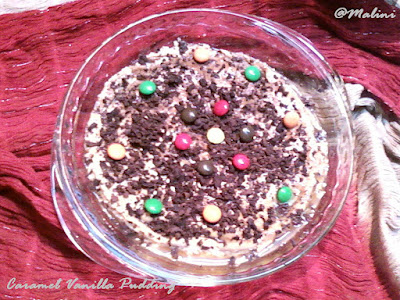
An omelette / Omelet is a preparation of beaten egg often served folded with fillings like cheese, vegetables, meat or some combination of the above.
To obtain a fluffy texture, whole eggs or egg whites are usually beaten with a small amount of milk / cream, or even water (the bubbles of water are what make the omelette light and fluffy). Traditionally, omelettes are partially cooked on the top side and not flipped prior to folding.
Egg foo young / egg fooyung is an omelette dish found in American Chinese cuisine. The name comes from the Cantonese language, and may be related to the Fu Yong flower, Hibiscus mutabilis.
Generally this dish is prepared with beaten eggs, chopped vegetables and minced meat (pork, shrimp & chicken). The classic Egg Foo Young recipe stated using cooked ham, I modified the recipe by adding milk and more vegetables like capsicum & tomatoes and using shredded chicken (I had some leftover chicken pieces) instead of ham.
Ingredients:
4 eggs
� cup milk
� cup cooked chicken, shredded
� cup bean sprouts1 medium onion, finely chopped
1 small tomato, finely chopped
1 small capsicum, finely chopped
1 clove garlic, minced
2 spring (green) onions / scallions, finely chopped
1 bunch fresh coriander leaves, finely chopped
1 tbsp cornstarch
1 tbsp soya sauce
salt (to taste)
1/2 tsp pepper powder / crushed pepper
2 tbsp vegetable oil
tomato sauce (to serve)
Procedure:
Beat the eggs with a little salt and milk to ensure that there are no lumps. Keep aside.
Rinse bean sprouts in cold water.
To stir fry the main ingredients, heat oil in a non-sick pan; add the bean sprouts and chopped vegetables (spring onions, onion, capsicum, tomatoes). Saute and stir fry in medium-high heat until the vegetables are tender.
Add the minced garlic and stir fry (ensure not to burn the garlic). Add cornstarch, soya sauce, shredded chicken, salt & pepper. Mix well. Remove from flame, transfer to a dish and keep aside. Allow to cool.
Cook the eggs in batches to get a layering effect. In a pan, heat a little oil and put � portion of the beaten egg mixture. Spread to coat the pan evenly. Add � portion of the stir-fried ingredients on the top.
Let it set for a while. Add the rest portion of the beaten eggs mixture and top with the final set of the fried ingredients.
Cover and let it set for a while. Carefully flip over to the other side and fry until light golden brown on both sides (do not fry too much or else the colour will be deep brown).
Transfer on a plate, fold in half and serve hot with tomato sauce / ketchup

This is going to the Blog your Omelet event, hosted by Nuria...


Also sending another one from my archive,
Pizza Omelette (a modification on Spanish omelette, a favouite of my son as it looks like a pizza) to the event..
 The carrot is a root vegetable, usually orange or purple, red, white, and yellow in colour, with a crisp texture when fresh.
The carrot is a root vegetable, usually orange or purple, red, white, and yellow in colour, with a crisp texture when fresh.





































 This is going to the
This is going to the 









